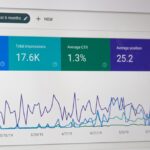In an increasingly digital world, local search has emerged as a critical component of online marketing strategies. As consumers become more reliant on their smartphones and other devices to find products and services nearby, businesses must adapt to this shift in consumer behavior. Local search refers to the process by which users search for information about businesses, services, or products in their immediate vicinity.
This trend is particularly significant for small and medium-sized enterprises (SMEs) that depend on local clientele for their survival and growth. According to a study by Google, nearly 76% of people who conduct a local search visit a business within a day, highlighting the urgency and relevance of local search in driving immediate consumer action. Moreover, local search is not just about visibility; it’s about relevance.
When users search for local businesses, they are often looking for specific solutions to their immediate needs. This means that businesses that optimize for local search can connect with potential customers at the right moment in their buying journey. The importance of local search is further underscored by the fact that 28% of searches for something nearby result in a purchase.
This statistic illustrates the potential for businesses to convert online interest into real-world transactions, making local search an indispensable tool for driving sales and fostering community engagement.
Key Takeaways
- Local search is crucial for businesses to reach nearby customers and drive foot traffic to physical locations.
- Local SEO strategies can help businesses improve their online visibility and attract local customers to their stores.
- Targeting local customers through specific keywords and location-based content can increase the chances of attracting nearby foot traffic.
- Optimizing Google My Business listing with accurate information and engaging content can improve local search rankings.
- Online reviews and ratings play a significant role in influencing local customers’ decisions and can be leveraged to attract more foot traffic.
- Building local citations across online directories and platforms can improve a business’s visibility in local search results.
- Creating localized content that resonates with the local audience can help businesses connect with nearby customers and drive foot traffic.
- Measuring local SEO success through metrics like local search rankings, website traffic, and foot traffic can help businesses evaluate the effectiveness of their strategies.
How Local SEO Can Drive Foot Traffic
Optimizing for Local Searches
Local SEO is the practice of optimizing a business’s online presence to attract more customers from relevant local searches. By focusing on local SEO strategies, businesses can significantly increase their visibility in search engine results pages (SERPs) when potential customers are looking for services or products in their area.
The Power of Google My Business Optimization
One of the most effective ways local SEO drives foot traffic is through the optimization of Google My Business (GMB) listings. A well-optimized GMB profile can appear prominently in local search results and Google Maps, making it easier for customers to find directions, contact information, and hours of operation.
Targeted Keywords and Location-Specific Content
In addition to GMB optimization, local SEO involves leveraging keywords that reflect local intent. For instance, a coffee shop in Austin might optimize for terms like “best coffee in Austin” or “Austin coffee shop near me.” By incorporating these localized keywords into their website content, meta descriptions, and blog posts, businesses can improve their chances of appearing in relevant searches. Furthermore, local SEO strategies often include creating location-specific landing pages that provide valuable information about the business and its offerings. This targeted approach not only enhances visibility but also builds trust with potential customers who are searching for services nearby.
Targeting Local Customers

Targeting local customers requires a nuanced understanding of the community and its unique characteristics. Businesses must identify their target audience within the locality and tailor their marketing efforts accordingly. This involves conducting thorough market research to understand the demographics, preferences, and behaviors of potential customers in the area.
For example, a family-owned restaurant may find that their primary audience consists of families with children, prompting them to create family-friendly promotions or events that cater specifically to this demographic. Additionally, businesses can utilize social media platforms to engage with local customers effectively. By sharing content that resonates with the community—such as local events, partnerships with other businesses, or community service initiatives—companies can foster a sense of connection and loyalty among their audience.
Engaging with local influencers or community leaders can also amplify outreach efforts, as these individuals often have established trust within the community. By strategically targeting local customers through various channels, businesses can create a loyal customer base that not only frequents their establishment but also advocates for them within the community.
Optimizing Google My Business
Google My Business (GMB) is an essential tool for any business looking to enhance its local SEO efforts. A well-optimized GMB listing can significantly improve a business’s visibility in local search results and Google Maps. To optimize a GMB profile effectively, businesses should ensure that all information is accurate and up-to-date.
This includes the business name, address, phone number (NAP), website URL, and operating hours. Consistency across all online platforms is crucial; discrepancies can confuse potential customers and negatively impact search rankings. In addition to basic information, businesses should take advantage of GMB features such as posts, Q&A sections, and photos.
Regularly updating posts about promotions, events, or new products keeps the listing fresh and engaging. High-quality images showcasing the business’s interior, products, or services can attract more clicks and visits. Furthermore, responding promptly to customer inquiries in the Q&A section demonstrates excellent customer service and can influence potential customers’ decisions.
By fully utilizing GMB’s features and maintaining an active presence on the platform, businesses can enhance their local visibility and drive more foot traffic.
Leveraging Online Reviews and Ratings
Online reviews and ratings play a pivotal role in shaping consumer perceptions and influencing purchasing decisions. In fact, studies show that approximately 84% of people trust online reviews as much as personal recommendations. For local businesses, this means that cultivating positive reviews can significantly impact their reputation and visibility in search results.
Encouraging satisfied customers to leave reviews on platforms like Google, Yelp, or Facebook can enhance credibility and attract new clientele. However, it’s not just about accumulating positive reviews; how businesses respond to feedback is equally important.
For instance, addressing negative feedback constructively can turn a dissatisfied customer into a loyal advocate if they feel heard and valued. Additionally, showcasing positive reviews on websites or social media channels can serve as powerful testimonials that influence potential customers’ decisions. By actively managing online reviews and ratings, businesses can build trust within their community and enhance their overall reputation.
Building Local Citations

Local citations are online mentions of a business’s name, address, and phone number (NAP) across various platforms such as directories, social media sites, and review sites. Building consistent citations is crucial for improving local SEO rankings because search engines use this information to verify the legitimacy of a business’s location and contact details. Inconsistent citations can lead to confusion among consumers and negatively impact search engine rankings.
To build effective local citations, businesses should start by listing themselves on popular online directories such as Yelp, Yellow Pages, and TripAdvisor. It’s essential to ensure that NAP information is consistent across all platforms to avoid discrepancies that could harm credibility. Additionally, niche-specific directories related to the industry can also be valuable for citation building.
For example, a local plumbing service might benefit from being listed on home improvement directories or trade associations. By actively managing citations and ensuring accuracy across various platforms, businesses can enhance their online presence and improve their chances of being discovered by local customers.
Creating Localized Content
Creating localized content is an effective strategy for engaging with the community while enhancing local SEO efforts. This involves producing content that resonates with the interests and needs of the local audience. Businesses can achieve this by writing blog posts about local events, highlighting community stories, or sharing tips relevant to the area.
For instance, a fitness center might create content around outdoor workout spots in the city or healthy eating options available at local markets. Incorporating localized keywords into this content is essential for optimizing it for search engines. By using phrases that reflect local intent—such as “best hiking trails in [City]” or “family-friendly activities in [Neighborhood]”—businesses can improve their chances of ranking higher in relevant searches.
Additionally, collaborating with local influencers or guest bloggers can provide fresh perspectives while expanding reach within the community. By consistently producing localized content that speaks directly to the audience’s interests and needs, businesses can establish themselves as trusted resources within their communities.
Measuring Local SEO Success
Measuring the success of local SEO efforts is crucial for understanding what strategies are working and where improvements are needed. Various metrics can be used to gauge effectiveness, including website traffic from local searches, conversion rates from visitors who find the business through local queries, and engagement levels on Google My Business profiles. Tools like Google Analytics can provide insights into how users are interacting with a website after finding it through local searches.
Another important metric is tracking keyword rankings specific to local searches. Monitoring how well a business ranks for targeted localized keywords over time can indicate whether SEO strategies are effective or need adjustment. Additionally, analyzing online reviews and ratings trends can provide valuable feedback on customer satisfaction levels and areas for improvement.
By regularly assessing these metrics and adjusting strategies accordingly, businesses can ensure they are maximizing their local SEO efforts and effectively reaching their target audience within the community.
Local SEO is crucial for brick-and-mortar businesses to attract customers in their area. In a related article on Influencer Database, the importance of utilizing social media influencers to boost local SEO efforts is discussed.
This strategy can help drive foot traffic to physical stores and ultimately lead to increased sales.
FAQs
What is local SEO?
Local SEO (search engine optimization) is the process of optimizing a business’s online presence to attract more local customers. This includes optimizing the business’s website, Google My Business profile, and other online listings to improve visibility in local search results.
Why is local SEO important for brick-and-mortar businesses?
Local SEO is important for brick-and-mortar businesses because it helps them attract nearby customers who are searching for products or services in their area. By optimizing their online presence for local search, businesses can increase their visibility and attract more foot traffic to their physical locations.
How does local SEO differ from traditional SEO?
While traditional SEO focuses on improving a website’s visibility in search results on a national or global scale, local SEO specifically targets local search queries. This means that local SEO strategies prioritize location-based keywords, local business listings, and localized content to attract nearby customers.
What are the key components of a local SEO strategy?
Key components of a local SEO strategy include optimizing the business’s website for local keywords, creating and maintaining a Google My Business profile, managing online reviews and ratings, and ensuring consistent business information across online directories and listings.
How can brick-and-mortar businesses improve their local SEO?
Brick-and-mortar businesses can improve their local SEO by optimizing their website for local keywords, claiming and optimizing their Google My Business profile, obtaining positive online reviews, and ensuring accurate and consistent business information across online directories and listings.















